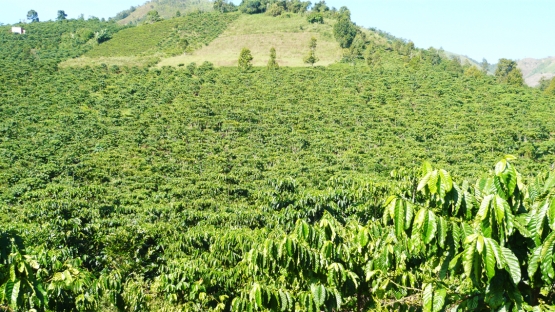Drylands represent 40 per cent of the world's land mass and are home to one third of the human population. Yet these fragile ecosystems — often the only available farmland for many — are under continuous threat. Land degradation, climate change, deforestation and improper use of soil from subsistence farming can and have turned many of these lands into deserts.
Worldwide soil degradation (including soil erosion, salinization, and soil compaction) is currently estimated at 1.9 billion hectares, close to two thirds of global soil resources, and this soil degradation is increasing at a rate of 5 to 7 million hectares per year. Aware of this growing threat, the IAEA is joining the international community in commemorating World Day to Combat Desertification by emphasizing the importance of drylands and sustainable development, as well as the key role of nuclear techniques in improving agricultural productivity in these areas.
The IAEA and the Food and Agriculture Organization (FAO), through the Joint FAO/IAEA Division of Nuclear Applications in Food and Agriculture, are helping promote climate smart agricultural practices through a range of nuclear and conventional techniques that are designed to assist farmers in IAEA Member States to better adapt to the impacts of climate change and variability.
“These new ‘climate smart’ agricultural practices, which combine proper soil management strategies and made-for-purpose technologies, can enhance the productivity, sustainability and conservation of dry agro-ecosystems,” said Lee Kheng Heng, Head of the IAEA Soil and Water Management and Crop Nutrition Section in the Joint FAO/IAEA Division.
“We have developed a wide range of nuclear and isotopic techniques for use in soil and water management in order to minimize land degradation caused by soil erosion and increased soil salinity,” Heng said. “These techniques also enhance nutrient and water use efficiency and increase the capture of atmospheric nitrogen and carbon as well, thereby improving soil fertility and mitigating greenhouse gas emissions.“
One of these techniques is the use of past radioactive fallout radionuclides (FRNs) to measure soil erosion rates and evaluate the efficiency of soil conservation measures. These FRNs have been successfully used in 65 IAEA Member States in studies on soil erosion and water availability.
Another technique involves the use of Compound Specific Stable Isotopes (CSSI) as tracers to precisely identify where eroded soil originate. CSSIs are specific to different plants so by studying the CSSI make-up of the eroded soil, scientists can trace it back to its origins and apply appropriate soil conservation management practices to control soil erosion and prevent land degradation. At the same time, stable isotopic techniques are also applied to study fertilizer use and uptake, as well as to determine evaporation and transpiration rates. Analytical results can then be used to apply appropriate soil and water conservation management practices — such as minimum tillage, mulching and a drip/spray irrigation system — to minimize soil evaporation under a range of different management practices.
For example, using this type of conservation agricultural practices has allowed China, Indonesia, Pakistan and Viet Nam to reduce land degradation in the targeted project areas by almost 50 per cent.
In Viet Nam, this also allowed coffee farmers to change their irrigation practices from furrow to drip, plus mulching the surface with branches and leaves. This has reduced soil evaporation from 17 to 5 per cent, and resulted in a savings of 211 cubic metres of irrigation water per hectare across the entire growing season. With a total coffee growing area of 290 000 hectares, approximately 62 million cubic metres of irrigation water could be saved, illustrating, among other examples, the usefulness of nuclear techniques in the global fight against desertification.






